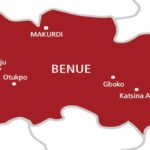The courts may yet have the final say on the outcome of the Bayelsa governorship elections which took place on Saturday, November 16, 2019. But on the evidence of what took place before and during the elections, the outcome reflected a large extent the wishes of the people of Bayelsa State. To some of us who know the state intimately, it was hardly a surprise; it was an affirmation of the principle of people’s power under a democratic setting.
Outgoing governor Seriake Dickson has been telling anyone who cares to listen that the elections was a sham and a travesty of democracy. He is within his rights to say so. But what he cannot deny is that he supervised the primaries that brought up the governorship candidate of his party, the People’s Democratic Party (PDP) in a similar fashion that he is alleging. What is more, an overwhelming majority of Bayelsans view his administration as tenure of incompetence, arrogance and wilful neglect of this oil-rich relatively easy to manage state. By the time of the elections the cumulative feeling of angst among most Bayelsans of all status, chafing under Governor Dickson’s misrule was such that they were not only in a hurry to be rid of the Sagbama-born native but anything associated with him. This in some ways could be likened to the “O to ge’’ situation during the last general elections in Kwara State which saw Kwarans overwhelmingly rejecting the overweening influence of former Senate President Bukola Saraki in the state.
Bayelsa is a state composed of eight local governments; Yenegoa, Southern Ijaw, Ekeremor, Opokuma/Kolokuma, Brass, Nembe, Sagbama and Ogbia. Although homogenously Ijaw, there are areas where different dialects of the language are spoken. Such areas are Nembe, Ogbia and Brass who are close kins and collectively constitute the Bayelsa East senatorial district.
In Bayelsa politics, whenever a candidate for governorship is picked from any of the core Ijaw local government areas, his running mate must come from Brass, Nembe or Ogbia. This has been the rule. But Dickson in his wisdom decided to force his candidates Senators Duoye Diri and Lawrence Evhrudjakpor from two contiguous local governments of the core Ijaw areas, Kolokuma/Opokuma and Sagbama, respectively. In contravention of the rule, this meant that the non-core Ijaw areas of Brass, Nembe and Ogbia were left out. For the PDP this also meant loss of one-third of potential votes that could help clinch him the governorship.
But even at that, the PDP candidate could still hope to make up the potential loss of the votes from the non-core Ijaw areas with those of the remaining five core Ijaw local governments if the tactics were right. In particular, solid votes from Southern Ijaw, Yenegoa and Sagbama could more than compensate for the loss of Brass, Nembe and Ogbia. Added to those of Ekeremor and Kolokuma/Opokuma, the PDP candidate could have coasted home to victory without a sweat. Perhaps that was what Dickson was banking on when he neglected the non-core Ijaw areas in his political calculations.
But Dickson did not get his tactics right especially in terms of his politics and programmes for the Bayelsa people which ultimately proved his undoing.
He supplanted the PDP structure in the state with his handpicked loyalists which he called ‘’The Restoration Team’’. It was with this team that he imposed his political will and determined who was relevant and who was not in Bayelsa politics and governance. By so doing, he alienated most of the political grandees of the state including former President Goodluck Jonathan who hails from Ogbia Local Government. In micromanaging the affairs of the PDP, he prevented the emergence of popular PDP candidates like Chief Ndutimi Alaibe who the PDP faithful believed could have clinched the party’s governorship ticket and could have gone on to win the elections.
But Dickson will have none of it. His grand design was to install Diri as governor and then to replace him as Senator when he vacates the seat. Going forward, his kinsman from Sagbama Senator Lawrence Evhrudjakpor as deputy governor would then take over after Diri must have served for eight years.
As with his politics so also with his governance. Bayelsa with a population of a little over two million and the fifth-largest recipient of revenue from the federation account owes its civil servants months of salaries and other emoluments. Dickson’s answer was to sack workers and to cut the emoluments of those that remained in service. Callously he embarked on a programme of paying workers’ salaries not commensurate with their grade levels where a grade 14 officer will find his salary downgraded by two levels, for instance.
It was hardly surprising that towards the election, the government and party was plagued by high profile resignations and defections.
Astutely, the opposition All Progressives Congress, (APC) capitalised on these failings. It elected its candidate Chief David Lyon, a popular man from Southern Ijaw, the largest local government in size and second largest in population, well known for his philanthropy. This ensured the votes of this local government to the opposition. And then Yenegoa the capital and neighbouring Ekeremor populated mostly by civil servants decided to show their anger by voting against the PDP. In all, six out of the eight local governments in Bayelsa thus voted against the PDP. The two local governments that did vote for the PDP were predictably, Kolokuma/Opokuma where the candidate came from and Sagbama the local government of both the governor and the running mate to Diri.
Whatever may be the final say of the courts, it cannot be denied that the Bayelsa elections were more a rejection of Governor Seriake Dickson by the people of Bayelsa than the election of Chief David Lyon.
 Join Daily Trust WhatsApp Community For Quick Access To News and Happenings Around You.
Join Daily Trust WhatsApp Community For Quick Access To News and Happenings Around You.


